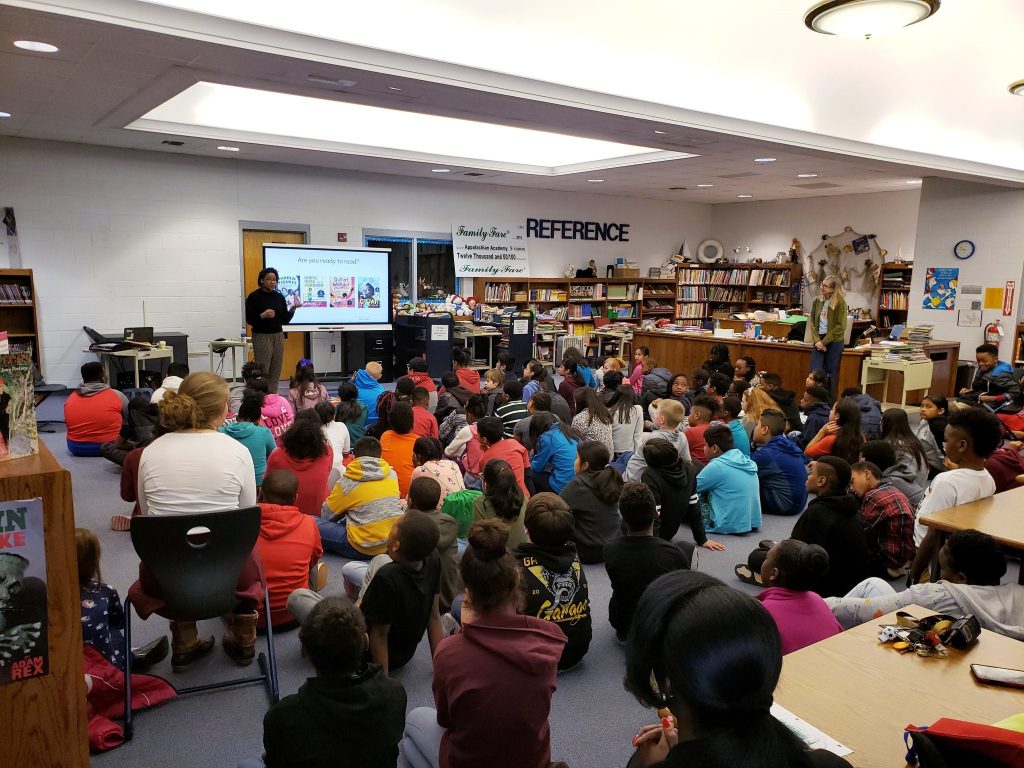
On a cool early morning in mid-March 2019, I arrived at the Appalachian State University Academy at Middle Fork, where over 200 elementary students were participating in a Mad about Books March Madness tournament. The tournament featured a weekly bracket of four picture books from major book awards–the Caldecott, Pura Belpré, Sibert, and Coretta Scott King Book Awards. Each week featured a new award, and I was visiting to present information about the Coretta Scott King Book Awards criteria and tips for reading and selecting award-winning picture books.
During each presentation, I was met with bright-eyed and excited children. Together, we talked about the unique criteria of the Coretta Scott King Book Awards and how we could read picture books to select the best ones. We practiced using the tips below as we read In Plain Sight, illustrated by Jerry Pinkney and written by Richard Jackson.
- Look at the whole book!
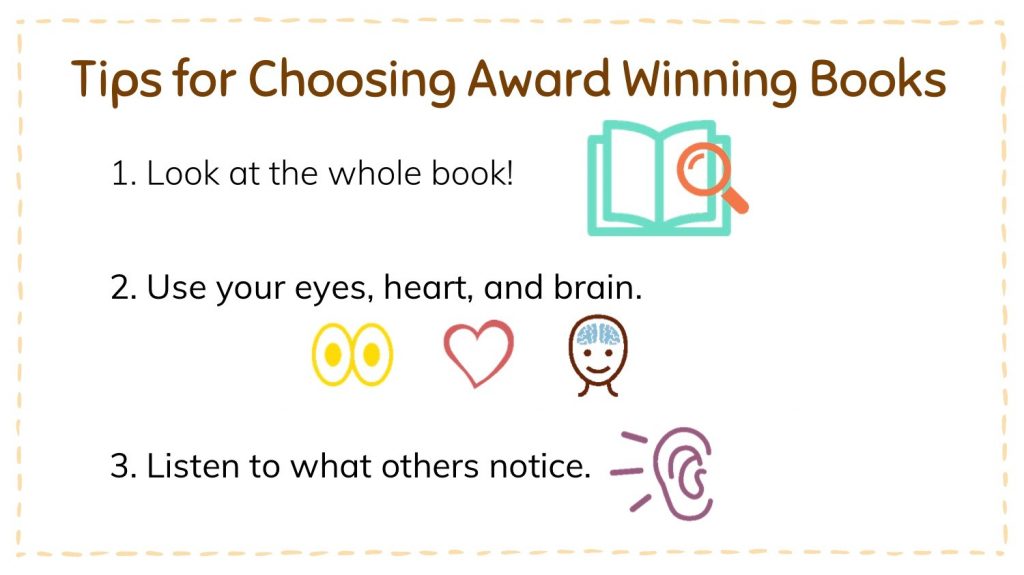
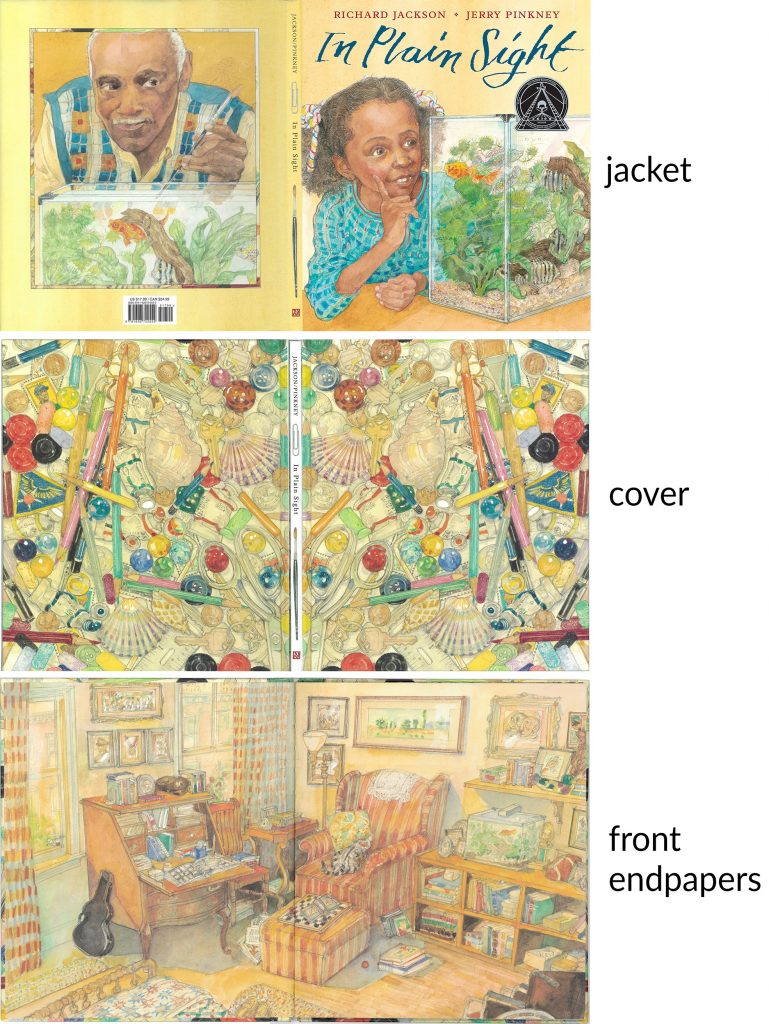
Taking the time to examine the various parts of a picture book (cover art, book jacket, casing, endpapers, text, illustrations, etc.) can give more insight into how all of the parts of the book work together to tell the story.
Before even diving into the text of In Plain Sight, readers are given a number of clues about the characters and story through the illustrated jacket, cover, and endpapers. We spent time making inferences about the beginning illustrations, and the students were delighted to find that the clues they pointed out made appearances later in the story and supported their observations.
2. Use your eyes, your heart, and your brain!
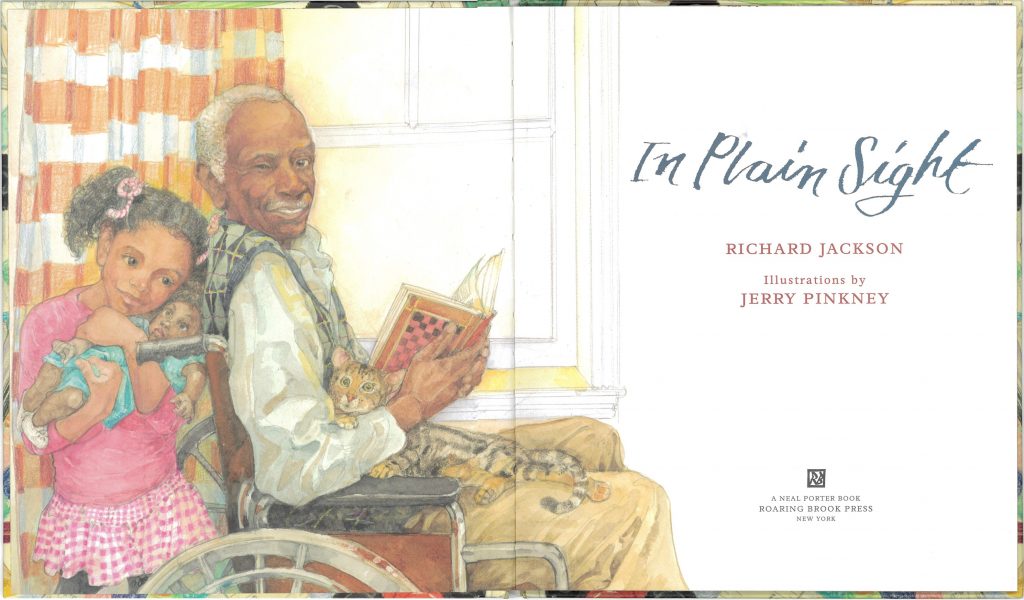
Asking readers to describe what they see on the page and how that makes them feel and what it makes them think can help push readers beyond simple observation into interpretation and analysis.
Looking at the illustration on the title page, students made insightful remarks about the close relationship between the characters because of how they interpreted the characters’ body language and facial expressions.
3. Listen to what others notice.
A major part of choosing the best books requires listening to what others think and notice about the book. Working together to understand and make meaning of the various elements of a book helps ensure the best book rises to the top. Together we listened to each other’s observations, inferences, and insights, and together we began to realize what a magical and exemplary book In Plain Sight is.
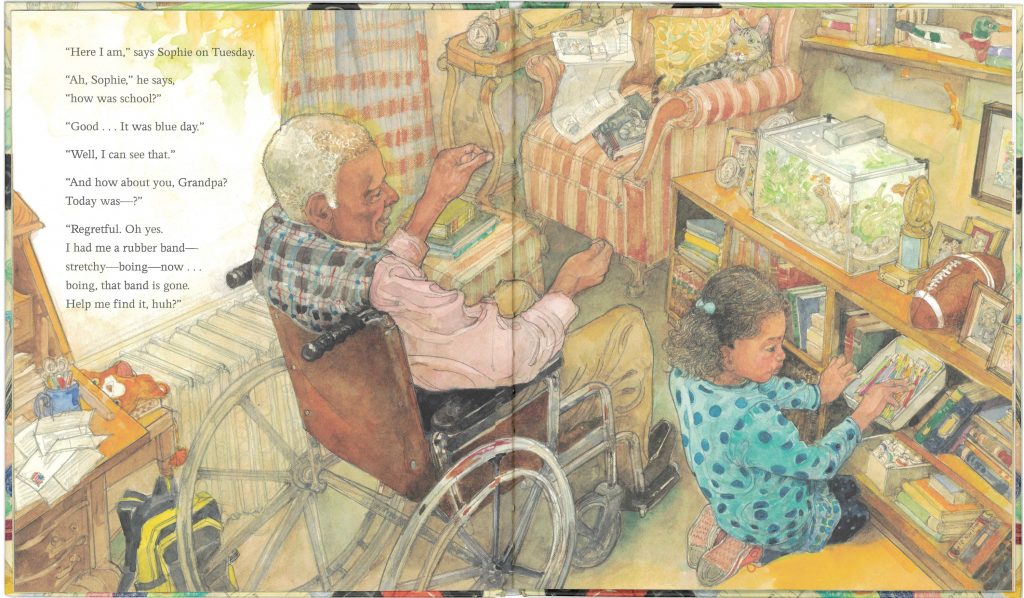
Some of the magic of In Plain Sight can be found in the interactive and participatory hide and seek game within the story. The elementary students excitedly engaged in exploring with each other to find the hidden items Grandpa placed around the room. Pinkey’s highly skilled pencil and watercolor illustrations are brimming with details. Students who made close observations could see the illustrated items around the room telling Grandpa’s rich past and present. In Plain Sight also showcases the warm and joyous cross-generational relationship between Sophie and her grandfather. Both characters delight in their time together, and I talked with the students about the importance and benefits of spending time with older relatives or family friends.
After using In Plain Sight to introduce students to the criteria and tips, I highlighted the titles they would be reading and judging for their March Madness brackets. It was heartwarming to see many of the children eager to read and judge newly awarded titles. With the award criteria fresh in their minds and some practice under their belts, I am sure they will work together to select their own winning title!
—
Jewel Davis is the Education Librarian in a PreK-12 Curriculum Materials Center at Appalachian State University’s Belk Library and Information Commons. She is a member of the 2020 Coretta Scott King Book Awards Jury.

This was a great piece, Jewel. I loved reading about how you are discussing essentially the value of visual literacy with elementary students. I also love your strategies, particularly, “Use your eyes, heart, and brain!”
This is an exceptional post. It is a road map to engaging young people in basic book evaluation. Librarians and teachers are always looking for book activities that they can easily duplicate. “Exploring in Plain Sight ” is a perfect example. I would have loved to use this strategy in my early career. I hope to use it in the future as I continue to connect children with African American literature.